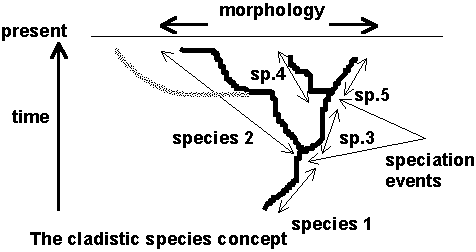Learninsta presents the core concepts of Biology with high-quality research papers and topical review articles.
Concept of Species – Morphological, Biological and Phylogenetic
Species is the fundamental unit of taxonomic classification. Species is a group of individual organisms which have the following characters.
- A population of organisms which closely resemble each other more than the other population.
- They descend from a common ancestor.
- In sexually reproducing organisms, they interbreed freely in nature, producing fertile offspring.
Species concepts can be classified into two general groups. Concept emphasizing process of evolution that maintains the species as a unit and that can result in evolutionary divergence and speciation. Another concept emphasises the product of evolution in defining a species.
Types of Species
There are different types of species and they are as follows:
- Process of evolution – Biological Species
- Product of evolution – Morphological Species and Phylogenetic Species
Morphological Species (Taxonomic Species)
When the individuals are similar to one another in one or more features and different from other such groups, they are called morphological species.
Biological Species (Isolation Species)
According to Ernest Mayr 1963,“ these are groups of populations that interbreed and are reproductively isolated from other such groups in nature”.
Phylogenetic Species
This concept was developed by Meglitsch (1954), Simpson (1961) and Wiley (1978). Wiley defined phylogenetic species as “an evolutionary species is a single lineage of ancestor descendent populations which maintains its identity from other such lineages which has its own evolutionary tendencies and historical fate”.
Phenetic Species Concept (morphological species concept): a set of organisms that look similar to each other and is distinct from other sets. Phylogenetic Species concept: the smallest monophyletic group distinguishable by shared derived (synapomorphic) characteristics.
A species concept is a way of defining or at least thinking about the differences between two species, especially otherwise quite similar species, and the Morphological Species Concept involves thinking about these differences in terms of how species differ in the shapes of their bodies and otherwise what they look.
The concept of species is an important but difficult one in biology, and is sometimes referred to the “species problem”. Some major species concepts are: Typological (or Essentialist, Morphological, Phenetic) species concept. Typology is based on morphology/phenotype.
The phylogenetic species concept has two distinct advantages:
- It can be applied to any population (fossil, asexual, or sexual)
- It is logical because different species have different synapomorphies only if they are isolated from gene flow and have evolved independently.
The biological species concept relies on behavioral data and emphasizes reproductive isolation between groups. The lineage species concept relies on genetic data and emphasizes distinct evolutionary trajectories between groups, which result in distinct lineages (branches on a phylogenetic tree).
According to the most widely used species definition, the biological species concept, a species is a group of organisms that can potentially interbreed, or mate, with one another to produce viable, fertile offspring. For example, when a female horse and a male donkey mate, they produce hybrid offspring called mules.
Evolution is a gradual change in the inherited traits of a population over many generations. Natural selection is a mechanism where the members of a population best suited to their environment have the best chance of surviving to pass on their genes.
